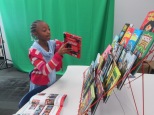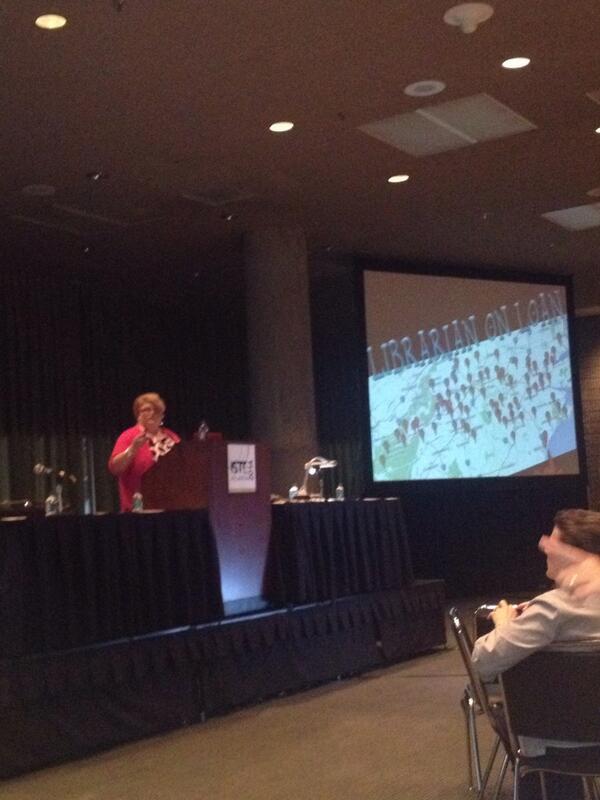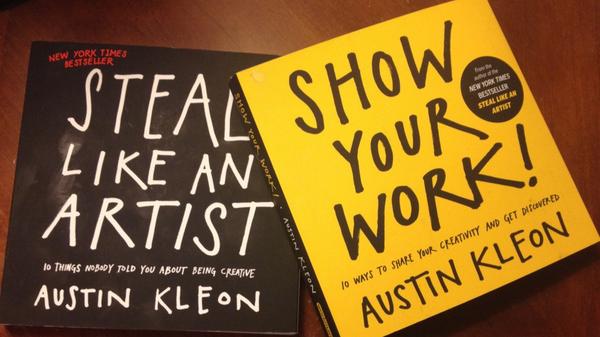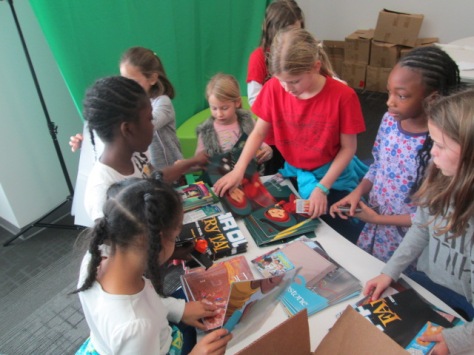
We have continued to unpack our student book budget purchases this weeks thanks to generous funding from James Patterson. Each year, there are stories that rise to the surface about students who take a stand for other student requests, students who find a certain talent within the many pieces of book budgets, and students who suddenly find a real world connection through our project.

This year as we unpacked, I was taking pictures and videos as I always do. I just happened to be near Ajacea, 5th grader, when she was setting up displays of books for people to see. She would set up some books and then take them down because she didn’t like the way they looked. Then, she suddenly decided to start putting the books on the little ledge in the wall of windows that faces the hallway. She talked out loud about how the books should face out so that people would see them as they walked down the hallway. I snapped a few pictures of her inside the library and also through the windows and shared those on social media.
Immediately, I got a tweet back from Amy Cox at Capstone Press, one of the main companies we order from for our book budget project. Her comment started a chain of events.
https://twitter.com/capstonepress/status/686960767296393216
I loved that Amy used the word “marketing” when she tweeted back to us because it was a real-world connection to an actual career. Whether Ajacea knew what she was doing was called marketing or not, it was intuitive for her, and we were able to connect an interest she had to an actual career path that she might not have ever considered.
By the end of the day, I observed multiple students passing by Ajacea’s windows and stopping to look at the books. They were pointing, talking, and asking their teacher if they could come to the library. Most of the books were checked out from the windows in just about an hour. When I shared this, once again Amy from Capstone responded.
https://twitter.com/capstonepress/status/686996050956029952
Ajacea stopped by at the end of the day and I told her that Capstone was impressed with her work and wanted her to be a marketing intern. She was beaming and said they should call her. I added this conversation exchange to my post about unpacking our books, and once again Amy Cox connected with us.
I had no idea what the email would contain, but I knew it would be something special and that Ajacea would love it. Right before Ajacea arrived to unpack and display more books, the email arrived. It contained an official “honorary marketing intern” certificate as well as a personalized tour of Capstone to see just what a marketing intern would do and where she would go.
Before I presented Ajacea with the award, I was showing her places in the library where students had been displaying books while she was gone. Some of the books had been placed on tables in the center of the library. She immediately started analyzing the situation and decided that the tables were just not going to work. “People need to use those tables,” she said. I explained that the rest of the day’s classes were working in different parts of the library. Her response, “Well what about tomorrow?” She was right of course. The next day I needed all of the tables, so she started moving some of the books to new places.
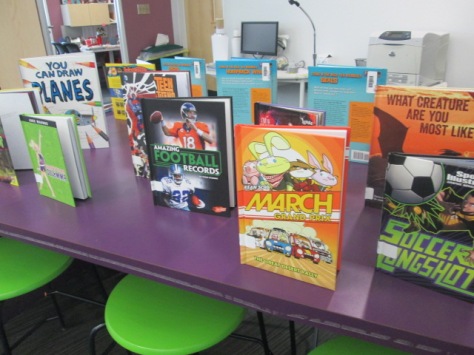
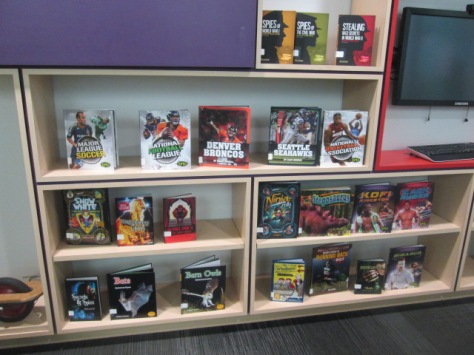
Before our time ran out, I asked Ajacea to come over to the tables to see something awesome. I told her about all of the response from Capstone and that they sent her some things to see. I presented her with her award and let her know that the Capstone team put together an official tour of the Capstone offices in the event that she became an intern with them. “They seriously did that for me?” was her response. We put the tour up on the big screen and sat together and chatted about what we saw.
Ajacea saw what it would look like if she walked in the front door of Capstone. She also got to see her desk, which she was very happy with. It was so big a spacious.
The presentation continued on with explanations of the types of jobs she would do as a marketing intern such as work on the Capstone catalog and analyze the data of PebbleGo users. She saw meeting rooms and offices of the CEO and other employees. When she saw the CEO office, she said, “I would not want to go in there. It’s scary.” We had a great conversation about what it’s like to go into the office of your boss and the nervous feelings you get even when it’s usually for something that you did that’s awesome.
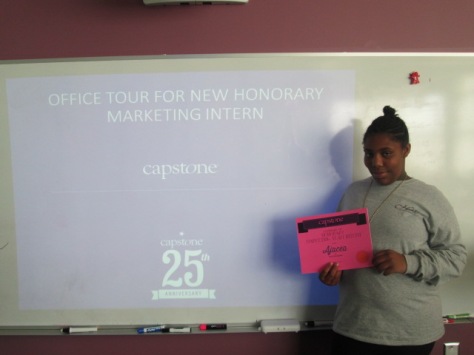

As we ended our time, we talked about what she was thinking about doing when she grew up. She told me how she wants to be a designer, any kind of designer. She loved the bookshelves on the wall at Capstone and said maybe she wanted to design spaces like that. She talked about clothes and the possibility of designing fashion. Her wheels were turning and it was so much fun to see and learn a student story that I had not heard before. It reminded of me of how much I was I had more time where I got to hear individual students stories and what I need to do to make sure I have more time to do that.
Capstone is filled with amazing individuals, and I can’t thank them enough for taking time out of their day to put this together for one student. You can tell that they are a company that is constantly reminding themselves about why they do the work that they are doing.













